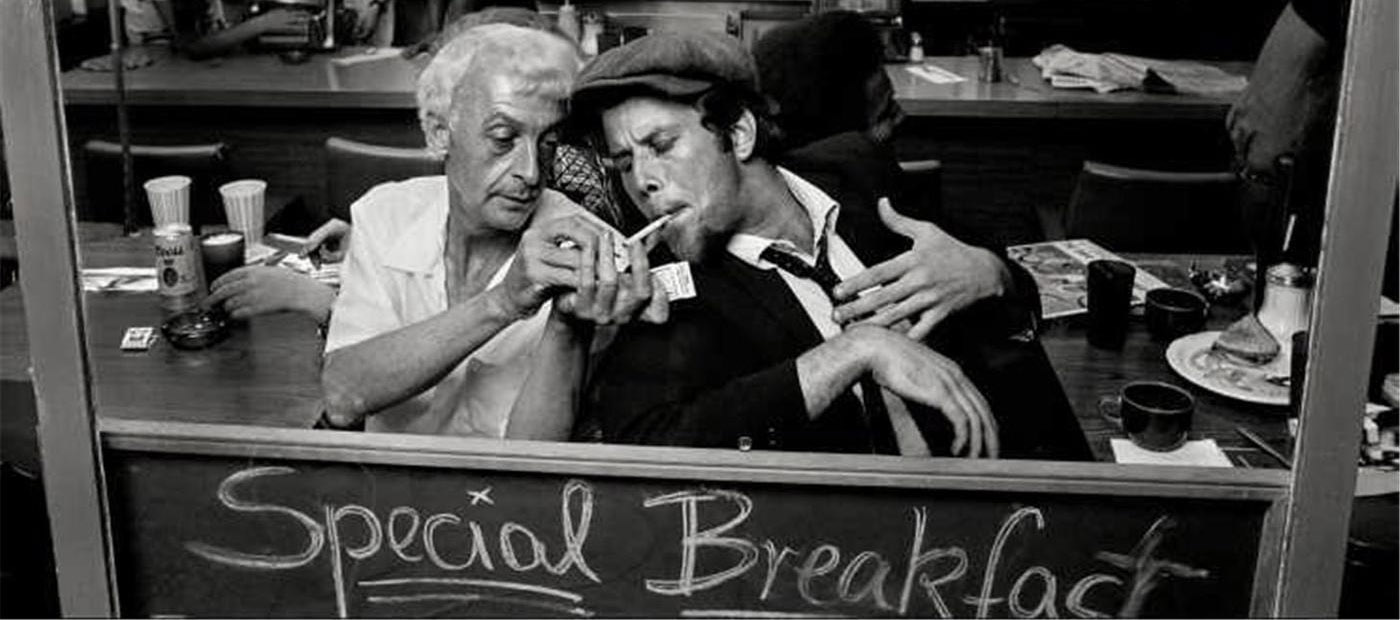
Stories can be told in infinite ways, and horror stories are no exception. One of the oldest ways storytelling are folk songs, which could tell tales of terrible monsters, warn of bogeymen, or recount harrowing murders. With the recent advent of folk horror in popular media, now seems like an excellent time to discuss one of the great storytelling songwriters of our time, the gravelly-throated crooner and player of drunken pianos, Tom Waits. This is Eden, and here is a look at how horror manifests in the music of this eccentric legend.
The musician himself has said, “I like beautiful melodies telling me terrible things,” and this is perhaps best exemplified in his many songs about murder. The oddly similar “Don’t Go into that Barn” and “Murder in the Red Barn” tell of cries from the woods in the night, and human remains buried in the ground beneath crumbling farms. Waits paints an ominous picture by describing abstract elements surrounding the events, such as the bruise-colored sky, the muddy leavings of a recent storm, and barren trees scratching upward like skeletal fingers.
Waits possesses a remarkable talent in the way he drip-feeds the details of his story.
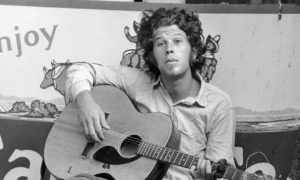
Straight away, we know that something is wrong, but not exactly what. He takes his time in setting a scene, and peppering in ominous dialogue to excite our morbid curiosity. In “Jockey Full of Bourbon,” he introduces a cast of unusual characters, their circumstances, and the setting they occupy, like a snapshot of the moment before everything hit the fan, before going into the eerie chorus: “Hey little bird/Fly away home/Your house is on fire/and your children are alone.” We know from the song’s drunken narrator that there is a woman named Edna on a train, that someone has a gun that won’t shoot, two men are in a bar brawl, and that a house fire threatens to consume some children, but how all these events are connected and how they came to be is a mystery that keeps us wondering. What our own minds conjure up to fill in these gaps is more disturbing than actually knowing.
The grim ballad “Sins of My Father” tells of a man on the way to his death, either willingly or unwillingly, but well aware of its imminence. He mentions a dog scratching on his door at night, perhaps an omen of death’s closeness, as dogs have long been associated with death and the underworld, and an old European superstition says that a black dog following you was a sign that you would soon meet your demise. Using such archetypal imagery, Waits gets into our heads and sets off warning bells, playing off our minds’ primal wiring to fear things such as carrion animals, abandoned buildings, and the sight of blood.
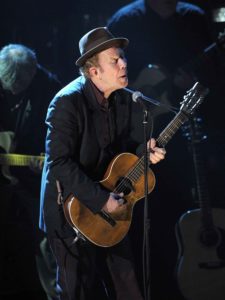
Folk horror is characterized by things like rural settings, obsolete superstitions and religious practices, and the absence of modern conveniences that might deliver us from dark forces we thought were just silly, antiquated beliefs. Tom Waits utilizes similar elements in many of his songs, harkening back to a time when we as a species were less secure in the world around us. He sows paranoia with descriptions of strange people or warnings against the jealous neighbor, making the familiar feel unfamiliar and hostile. In his songs, the world is amorphous, dreamlike, and threatening. His blues man persona makes him and his work feel timeless, transporting us to darker days with a few discordant notes. Until next time, make sure you don’t go into that barn.
More Reviews
To say that Shinji Sômai is one of the greats of cinema is an understatement. He is quoted as describing his directing philosophy as “humanity observing humanity,” his approach was… A Savannah Haunting was an odd but compelling watch at the online edition of the 2021 Dracula Film Festival in Romania. Directed by William Mark McCullough, who is a prolific… “I came out early, I couldn’t take it”“I hated it”“I loved it and won’t have a word said against it!”– Quotes overheard in the foyer, after having seen Skinamarink. Written… In the middle of a pandemic, times are hard for Eula Baek and the restaurant she inherited from her grandfather. A plan to get some rare truffles to help raise… In a previous article of mine, I mentioned the creation of found footage and incorrectly attributed this title to Eduardo Sánchez and Daniel Myrick’s The Blair Witch Project (1999). Although… In the not-so-distant future, death is a choice for some. Robert Holz’s first feature-length film, Restore Point (2023), is a masterpiece, brilliantly capturing the dystopian future that we all fear…Sailor Suit & Machine Gun (1981) Film Review – Carry On My Wayward Gun
A Savannah Haunting (2021) Film Review – Southern Values And Visitations
Skinamarink (2022) Film Review – What exactly is a “Horror film”?
Peppergrass (2021) Film Review – Truffles To Die For
The McPherson Tape (1989) Film Review – Guess Who’s Coming To Dinner
Restore Point (2023) Film review – Supreme Sci-Fi Thriller [Toronto After Dark Film Festival]
Eden is a Soong-type android learning to pass as human through studies of pop culture, humor, and dark fantasy. Perhaps one day she will learn to love and pronounce “hyoo-mahn” correctly. She was written analyses of music, video games, comics, and film. You can find her other writings on Vocal and WordPress.

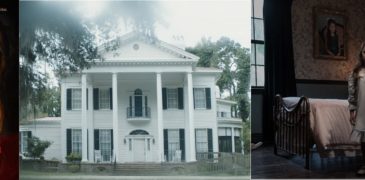
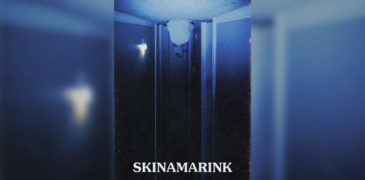
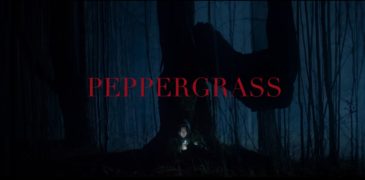
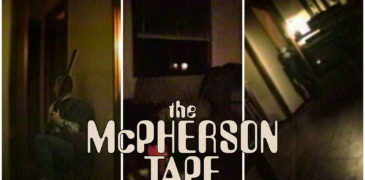
![Restore Point (2023) Film review – Supreme Sci-Fi Thriller [Toronto After Dark Film Festival]](https://www.grimoireofhorror.com/wp-content/uploads/2023/10/Restore-Point-2023-cover-365x180.jpg)